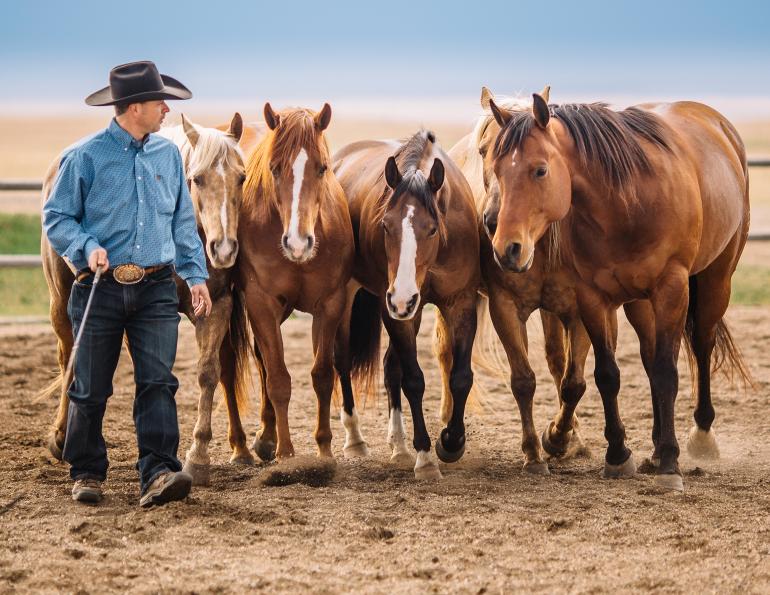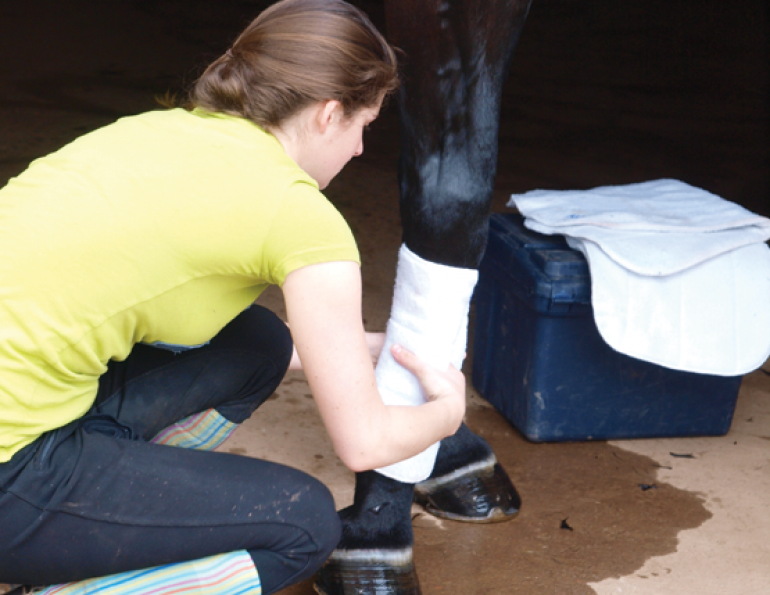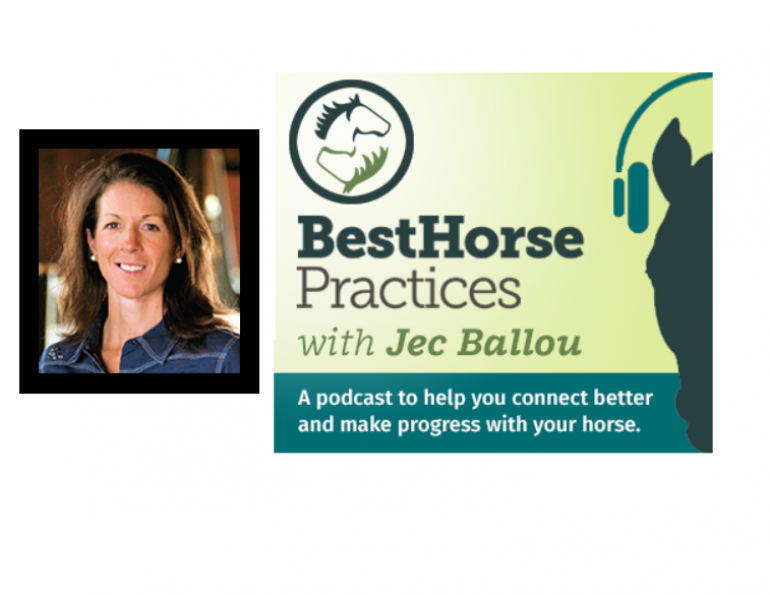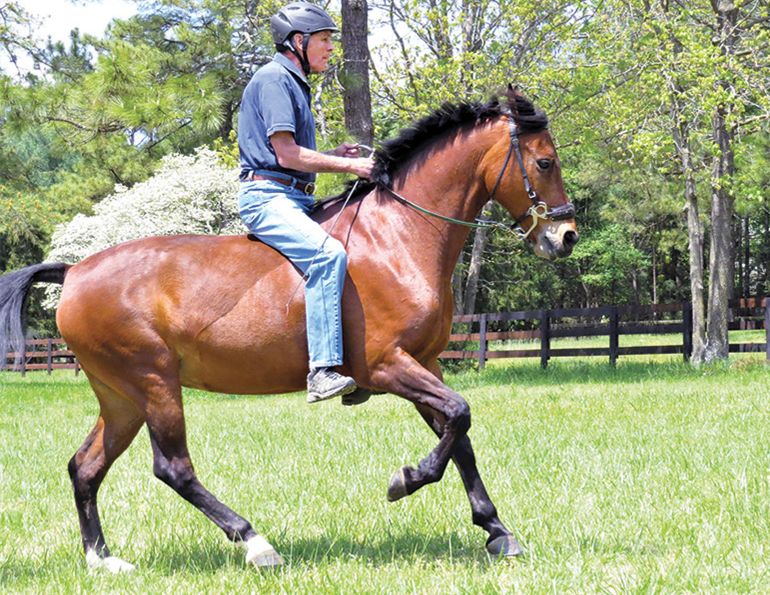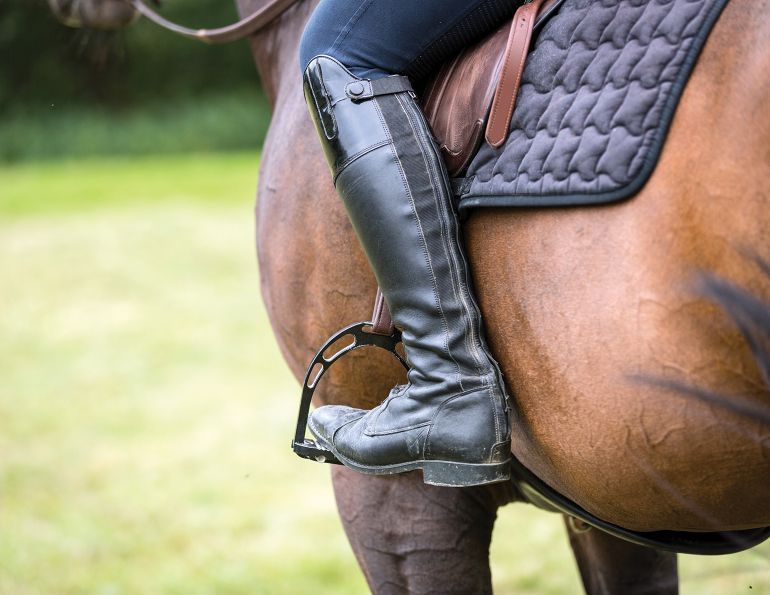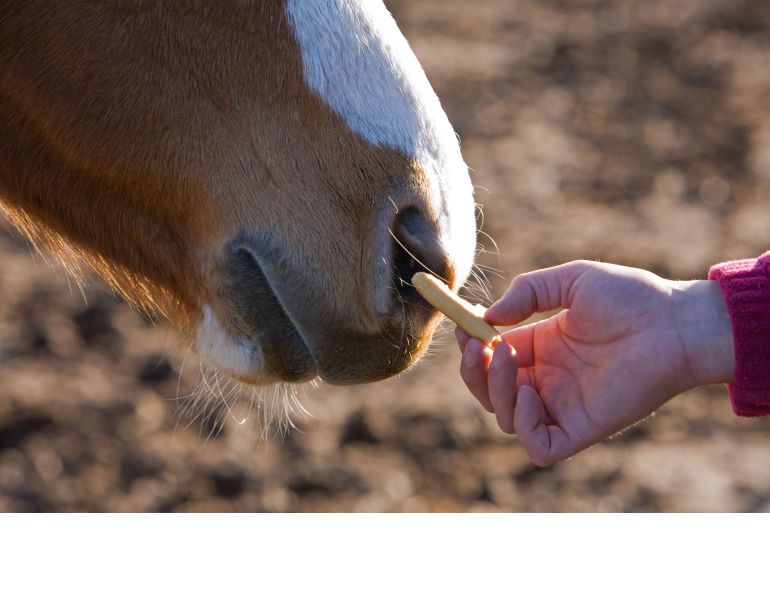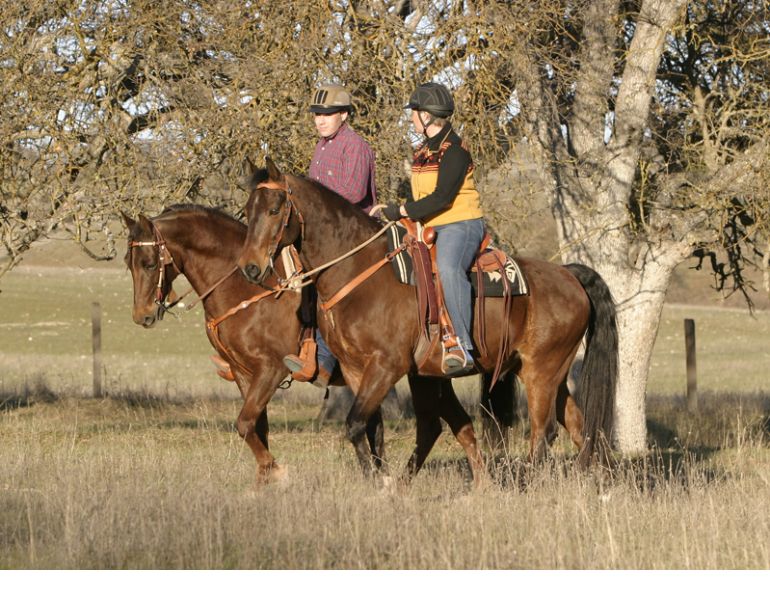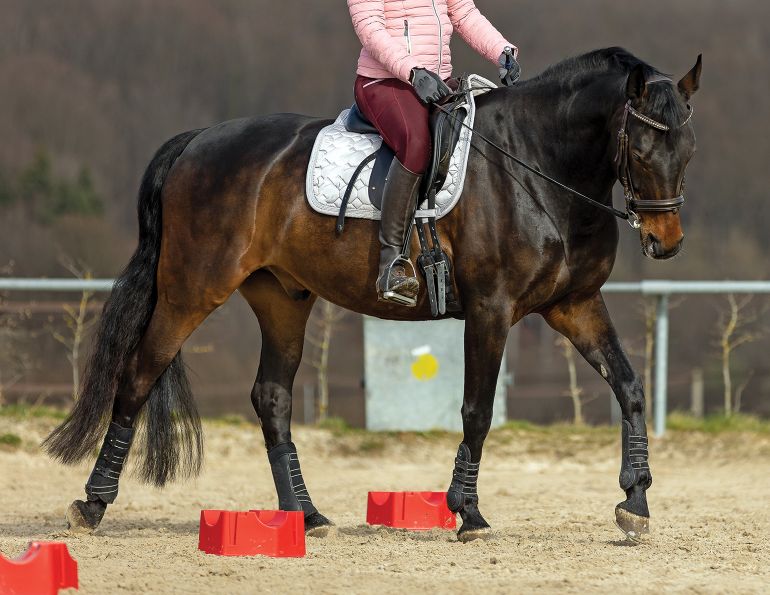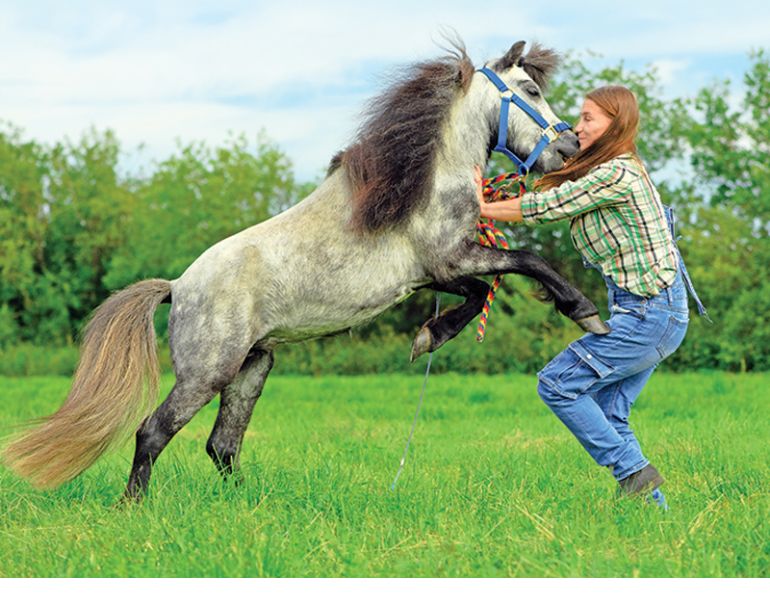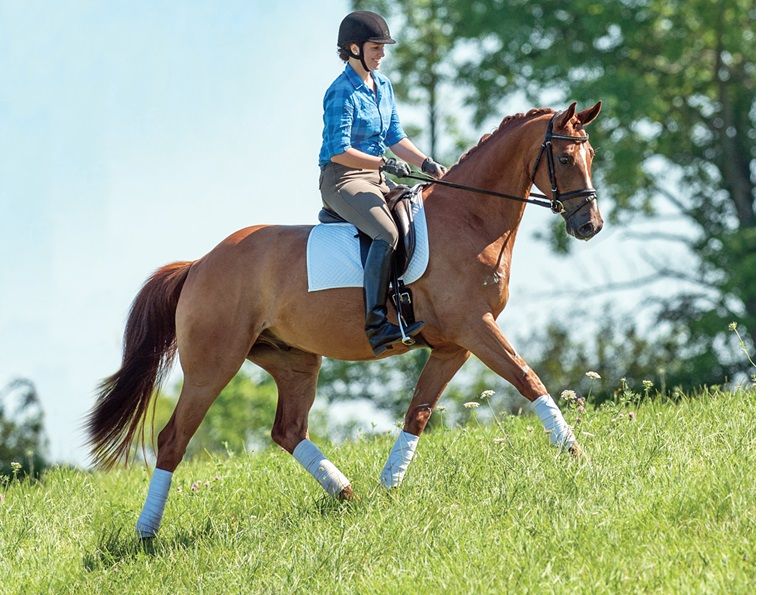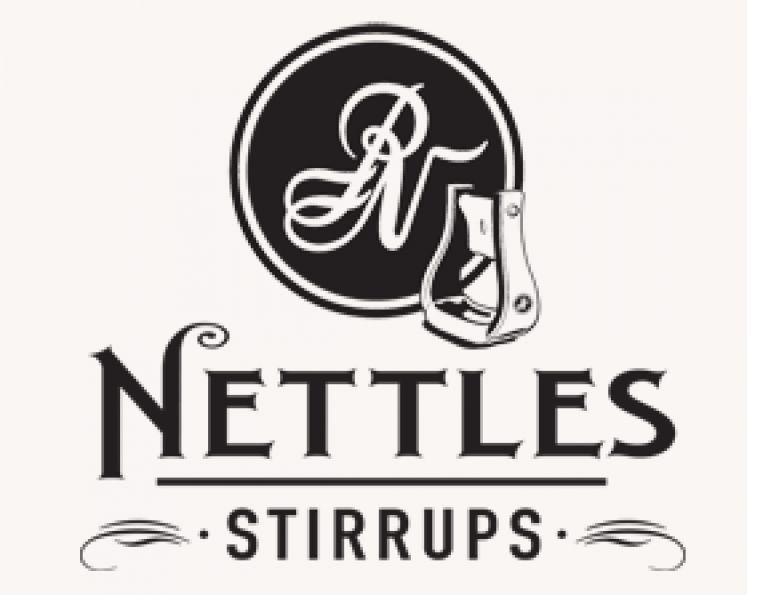Are They Good, Bad, or a Bit of Both?
By Tania Millen, BSc, MJ
Colt starting competitions are wildly popular with audiences, imbuing a sense of wonder at what trainers can do with previously unhandled three-year-old horses (colts) in just a few hours. They’re judged events, where each trainer is paired with an unbroke horse and has just a few hours to start it under saddle. While the trainers work with their horses, they explain their training methods to the audience. On the third and final day of the competition, the trainers show off their horse’s skills over an obstacle course. The young horses are started by top-notch trainers, the spectators are entertained, and the trainers win prizes and kudos for their skills. So, what’s not to like?
Some people call these competitions “bullies on babies” because although the trainers are highly skilled, they’re under pressure to train in a very short time. That pressure may induce the trainers to push colts harder than if they were simply training at home, potentially sacrificing horse welfare for competition points. The horses may be overwhelmed and become withdrawn or develop learned helplessness. And the colts are physically immature. Horses continue growing until age six, and riders and tack weighing more than 15 to 25 percent of the horse’s bodyweight can cause lameness. But the weight of many competitors and their tack likely exceeds this. So, are colt starting competitions good, bad, or a bit of both? A colt starting competition organizer, a judge, and a competitor, share their thoughts.
Niki Flundra is the founder and producer of the 2019 and 2021 Heart of the Horse (HOTH) colt starting competitions in southern Alberta. She believes that everyone benefits from colt starting competitions — the audience, the competitors, and the horses.
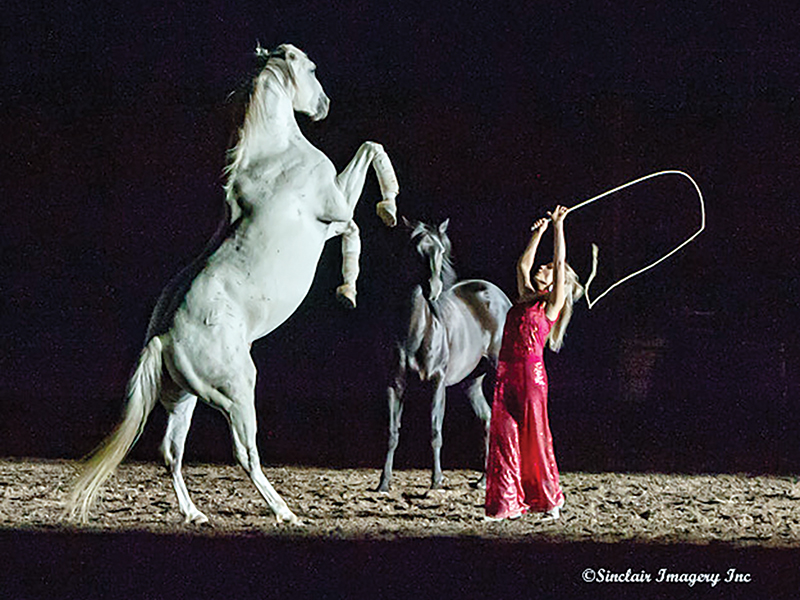
Niki Flundra, founder and producer of the 2019 and 2021 Heart of the Horse colt starting competitions, believes that the horses benefit from being started by the very best trainers and that the events educate and inspire people. Photo: Sinclair Imagery
“I think people are drawn to colt starting competitions because it’s absolute magic when trainers step into the round pen with colts that are almost totally unhandled,” she says. “At the Heart of the Horse competition in 2019, you could’ve heard a pin drop in that arena. The audience was completely engaged in what was happening.
“Colt starting competitions educate people, inspire people, and entertain people,” she continues. “There’s always the element of danger. There are triumphs, defeats, and challenges, and the trainers overcome them. Most of all, I think people just really appreciate great horsemanship. It’s an opportunity [for trainers] to grow and learn and showcase their unique styles and talents. It’s a great way for [the competitors] to promote their horsemanship businesses and share their knowledge with a lot of people.”
She thinks that colt starting competitions are good for the horses, too. “These colts have the opportunity to begin their education in the hands of some of the very best.” She says that HOTH allows the trainers to take their time and does not promote rushed situations that mentally or physically stress the horses. The best interests of the horse and trainer are their first consideration, and the horses’ well-being is their first priority.
HOTH protects horses and competitors through rules, regulations, and the judges they choose.
“The judges are selected because of their vast knowledge and experience in the horse industry,” says Flundra. “As a judge, it’s important to recognize good horsemanship and be fair to horses and trainers. I think one of the hardest things to differentiate as a judge is when the best horsemanship is happening — not just whose horse is progressing the fastest. The fact that each horse is unique, has a different personality, and will progress to some degree on its own timeline, has to be taken into consideration. The judges need to have a lot of experience in reading not just the trainers’ techniques but the horses themselves.”

Participants in Heart of the Horse 2021 colt starting competition: Dustin Sippola (left), Glenn Stewart (right, top), and Jill Barron (right, bottom). Photos: Sinclair Imagery
What does a former judge think of colt starting competitions?
Jill O’Neill is a coach, successful multi-discipline competitor, and trainer who has started horses for 35 years. She judged the 2011 Northwest British Columbia Annual Colt Starting Competition in Smithers, and says, “I will never judge another one.” As a lifelong trainer, O’Neill was initially drawn to colt starting competitions. But she says, “Sitting there [judging a colt starting competition] for three days, I really felt there were welfare issues.”
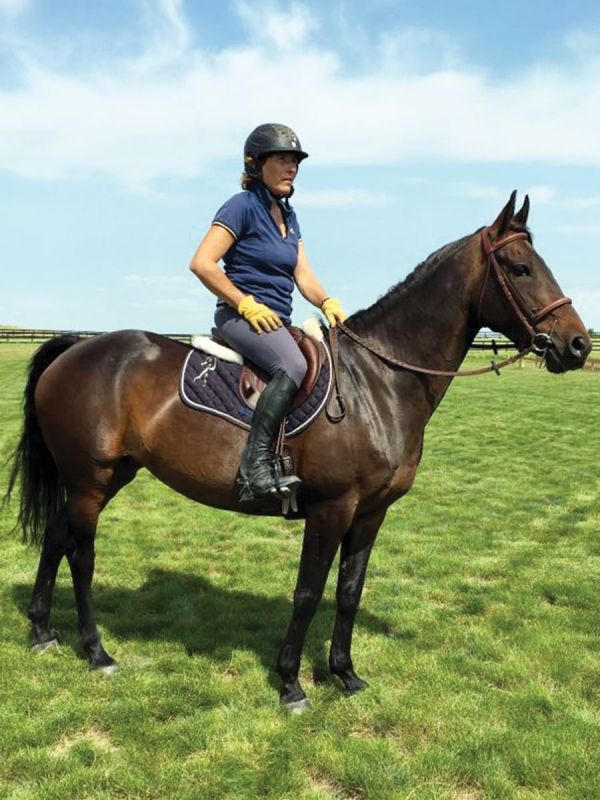
Coach, competitor, and trainer Jill O’Neill has started horses for 35 years. After judging the 2011 Northwest British Columbia Annual Colt Starting Competition and says she wouldn’t judge another one. Photo: O’Neill Collection
O’Neill explains that her training philosophy embraces ethical training that incorporates equitation science, so she disagrees with the pressure placed on horses by the competitive aspect of colt starting events.
“It’s hard not to bring your ego into that [colt starting competition] arena because it’s a competition — it’s about winning,” says O’Neill. She thinks because colt starting competitions are judged, prizes are awarded, and the trainer’s reputation is on the line, they encourage trainers to push horses and produce results. What the trainers can get done in a short timeframe becomes more important than the horse’s welfare. O’Neill continues, “Good training is letting the horse create the agenda and not letting our needs and demands set the training schedule. We’re so guilty of bringing our human brain [into our training and riding]. We need to ride and train through the horse’s brain.
“These trainers have systems and they’re good trainers, so they adapt,” she continues. “But they have a timeline and if that horse doesn’t fit their timeline, it’s pretty hard not to allow frustration into your training. As soon as you do that, you stop thinking about why [the horse is reacting the way it is].”
Related: Broke Horse vs Schooled Horse
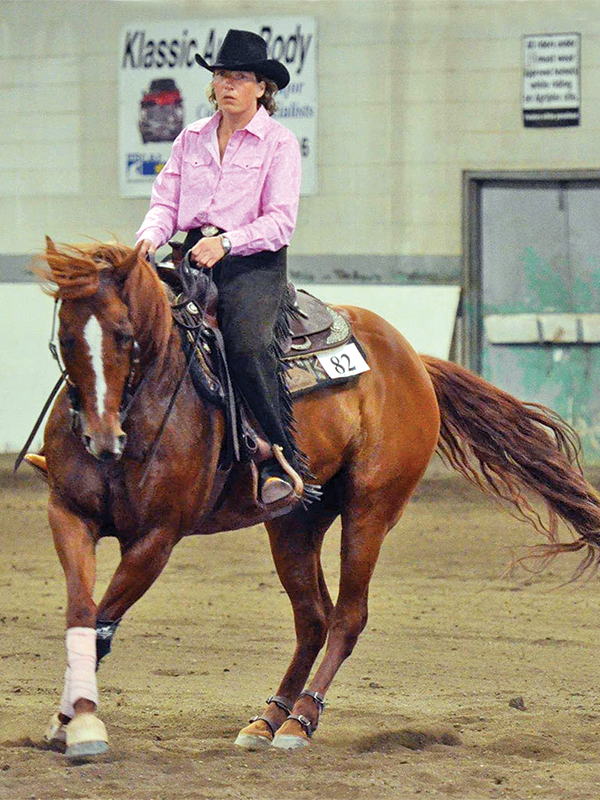
Jill O’Neill has concerns about the physical and mental well-being of the young horses in the colt starting competitions because of factors such as the weight of rider and saddle, and how body sore the colts must be by the end of the event. Photo: Leah Foxcroft
O’Neill really worries about the horses’ physical and mental welfare. She says, “One thing I’ve never heard anybody talk about is how body sore those colts have got to be by day three. Think about how many times the trainers put saddles on and off, and step up in the stirrup, then step off. Most of those trainers are not little. Do any of those saddles even fit those little horses? Now what do these horses associate with being ridden? Pain. We’ve bred horses to be so compliant, they’re willing to go through it. So, what have you taught that horse? That even if it’s painful you have to comply. Now we have a horse that has learned helplessness — probably the hardest thing to train out of a horse, right? It’s a welfare issue and I’m shocked that [colt starting competitions] are allowed.”
Having said that, O’Neill agrees that audiences love colt starting competitions. “They're watching people get on ‘wild’ horses so there’s a risk factor,” she explains. “Plus, there’s a fascination with that whole horse-whispering mystique. It’s very staged and the trainers are like old evangelistic preachers. [They] know how to play to the crowd and the crowd loves it. I think the majority [of spectators] are there for the show. But I think some of them are there to figure out how to start their own horse and that’s terrifying.”
O’Neill believes that colt starting competitions have negatively affected the horse industry overall. She says, “[Colt starting competitions] give Joe Public the wrong idea about how to start a horse and how much a trainer can do with a horse in a period of time.” O’Neill thinks that colt starting competitions have normalized horses being started too young, in substantially shorter timeframes, and being considered “broke” after little training. Slower training methods allow horses to process their training, stay engaged rather than shut down, and prevent injuries. But taking 60 or 90 days to start a horse isn’t popular with clients who watch colt starting competitions where trainers get on horses in the first hour. She says the competitions promote hurried training, and horse owners go to trainers thinking they can do what the colt starting competitors are doing. Unfortunately, most trainers don’t have the necessary skills, and the horses suffer.
Ultimately, O’Neill says, “I’m not trying to disrespect anybody. I’m just saying that [colt starting competitions] don’t fit into my training philosophy.”
So, what does a competitive colt starter think?
Jim Anderson is from Irvine, Alberta where he operates Higher Horsemanship. He says, “I grew up on a small ranch in Alberta and started my first colt with Ray Hunt when I was 14.” He also went to clinics with Tom Dorrance and spent time with Brian Neubert, who he says is “probably the most influential person on my horsemanship.” Anderson subsequently won over $200,000 in reining and cow horse events, and the Calgary Stampede Cowboy-Up Challenge twice. Then he won the 2014 Road to the Horse (RTTH) Wild Card Championship — his first colt starting competition — and the 2014 World Championship of Colt Starting.
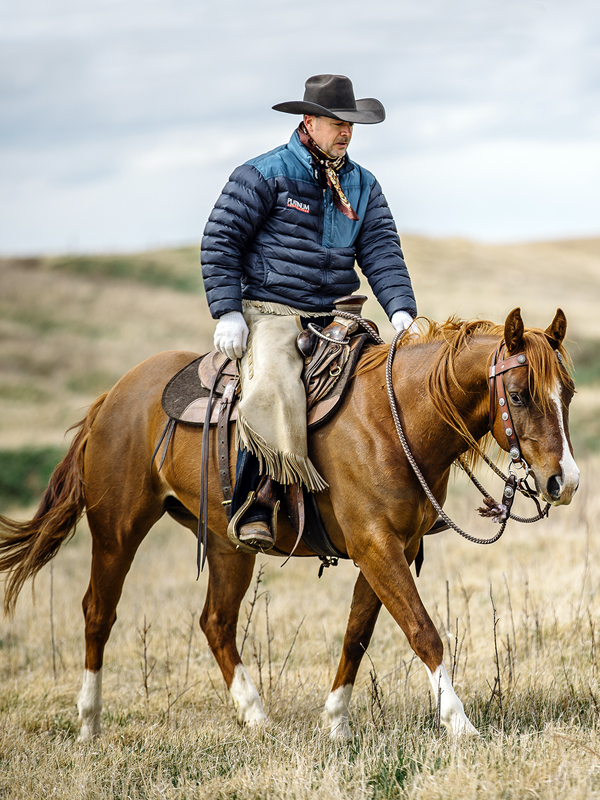
Jim Anderson believes in giving the horse extra time to learn how to learn. Photo: Danique Henderson
Anderson explains his horsemanship philosophy by saying, “I want to allow the horse to learn. If it’ll take me five minutes [to teach something], then I’m going to use ten minutes, and give [him] a bit of extra time to learn how to learn. The more time we take, the more confidence we’re going to build and that’s going to be better for the horse.” He says, “At a [colt starting] competition, we’re under a time constriction and that’s a bit of a downside.”
When asked whether the pressures of colt starting competitions encourage competitors to push horses harder than they would at home, Anderson says, “No, I want to stay true to my horsemanship. It doesn’t matter if it’s a reining competition or a colt starting competition, we should never allow the goals to get ahead of our horsemanship.” He adds, “When we have really good horsemen as judges, I think [sacrificing horsemanship for competition marks] would definitely contribute to how they’re marking.”
Related: Working with Foals, Weanlings & Yearlings, with Jonathan Field
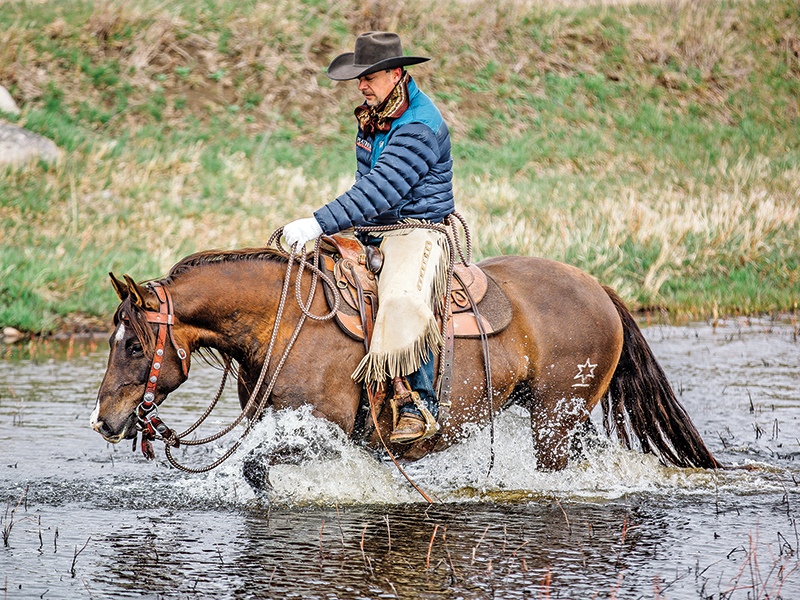
Above: The time constraints at a colt starting competition are a downside, says Jim Anderson, but if the judges themselves are good horsemen, the marks they give should not reward trainers who pursue winning over good horsemanship and horse welfare. Photo: Danique Henderson
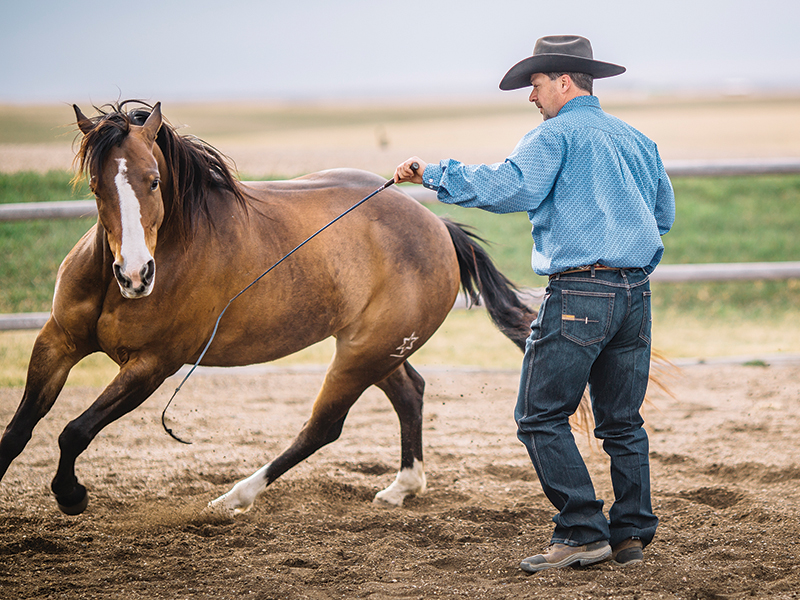
Jim Anderson says that at a three-day colt starting competition, the colt does all sorts of obstacles and is flooded with stimuli in a short timeframe, but once back at home he works with the horse to provide the foundation for each obstacle. Photo: Danique Henderson
When asked whether other trainers might pursue winning over horse welfare, Anderson says, “I think in all aspects of our industry, we have both scenarios. I would hope that in our colt starting competitions — because we’re promoting good horsemanship — that [competitors] are going to try to stay as true to [good horsemanship] as we can.”
However, Anderson says, “I think anytime you have a shorter time period, whether it’s a reining futurity or a colt starting competition, there are going to be some horses that fit into the timeframe and [others] that need more time.” He adds, “I don’t think trainers are going to chuck so much stuff at [the colts] that they can’t handle it. It’s just the scenario. These colts are coming from different ranches to a new place. So everything is new, and there are so many new things they almost get flooded with stimulus. Then they don’t react to other things.
“There’s a flood aspect to colt starting competitions because the horses see a lot in a short period of time,” says Anderson. “You can still do the flood aspect, practice good horsemanship, and get through all the obstacles.” However, he explains, “When we start a colt at home, we wouldn’t do that much with them in that short a timeframe.” Anderson also explains that a horse that’s been flooded in a three-day colt start and successfully done all sorts of obstacles will be different when they get home — likely reacting to obstacles that didn’t bother them when they were flooded with excess stimuli. “When we take a horse home from [a colt starting] competition, we need to go back and [provide the horse with] the foundation for each obstacle.
“Every time I've been to the Road to the Horse, I’ve tried to promote more sessions and more time,” he says. “We still want the show aspect of it, but [we need to have] enough time for the horses, and for the trainers to do a good job on horsemanship.”
Ultimately, Anderson says colt starting competitions allow spectators to see high-quality horsemanship, and he thinks that’s why audiences show up. He says individuals might attend because they want to start their own horse or get some horsemanship tips, but admits some spectators are drawn to “the NASCAR side of it.”
Are colt starting competitions good, bad, or a bit of both? It depends on your perspective and horsemanship beliefs.
Related: Roping 101: Cowboy School
Main Photo: Jim Anderson operates Higher Horsemanship based in Irvine, Alberta. Photo: Danique Henderson



